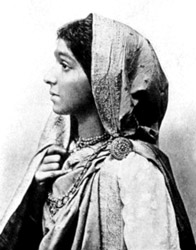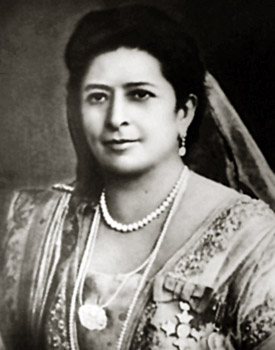Women`s Indian Association was formed by European initiative for the upliftment of Indian women. The chief motivating factor behind the formation of this Association was Margaret Cousins, an Irish feminist, theosophist, and musician, who arrived in India in 1915. After she had come to India, an officer of the Theosophical Society in Adyar invited a number of women to meet with her. After this meeting Cousins spoke with Dorothy Jinarajadasa, an Irish feminist married to the highly respected Singalese theosophist C. Jinarajadasa, about forming a women`s organization. Many of the Indian women already belonged to the Tamil Madar Sangam (Tamil Ladies` Association) and had joined with British women in forming the National Indian Association to promote female education, particularly English language instruction, and the teaching of crafts. As the two groups began to mix more freely, they decided to form the Ladies` Recreational Club to sponsor tea parties, badminton, and tennis. Cousins and Jinarajadasa were proposing a new organization that would combine education, crafts, and sports. Thus the Women`s Indian Association came to be formed.
The women who formed this organization decided to call it the Women`s Indian Association because membership was open to both Indians and Europeans. Annie Besant became the first president with Margaret Cousins, Dorothy Jinarajadasa, Mrs. Malati Patwardhan, Mrs. Ammu Swaminathan, Mrs. Dadhabhoy and Mrs. Ambujammal as honorary secretaries. Once the Women`s Indian Association was formed, Jinarajadasa was anxious to encourage the formation of branch organizations. She wrote to Theosophical Lodge secretaries throughout the Madras Presidency explaining that a local branch of the Women`s Indian Association could play a key role in effecting the regeneration of India. The response to these letters was extremely positive. By the end of the first year there were thirty-three branches. Within five years, there were forty-three branches, twenty centres and 2,300 members. Each branch accepted the main aims of the association but remained self-governing. This made it possible to mobilize the branches to express women`s opinion.
Even though the organisation had an obvious connection with and was dependent on the Theosophical Society, it defined itself as an association that included and represented women of all races, cultures, and religions. Each branch was to chart its own course of work in four main areas- religion, education, politics, and philanthropy. As regarded the realm of religious activity, women were considered to be religious by nature and the emphasis was on non-sectarian religious activity. Education was one of the most important areas of activity of the organisation and the branches were encouraged to set up adult classes for literacy, sewing, and first aid. Politically, the organisation had been active from the beginning when they sent a delegation to meet with Secretary of State Montague in 1917 to request the franchise for women. The fourth area of work, philanthropy, involved feeding the poor, setting up shelters for widows, and providing relief for disaster victims. The Women`s Indian Association`s monthly journal, Stri Dharma, was published in English but included articles in both Hindi and Tamil. It carried news of events of interest to women, reports from the branches, and articles on women`s condition.
Though the Women`s Indian Association did much for the welfare and development of women, it was born at a time when it was in direct competition with the self-respect movement. This self-respect movement had a larger agenda than women`s rights. Its goal was to establish a society free from the domination of the priestly caste, with justice and equality for all human beings. Ideologically it was more radical in its criticism of existing gender relations, particularly of the role of religion in assigning women a subordinate position. The self-respect movement rejected Brahmanical symbols while it retained the same limited definition of women`s roles. The presence of the self-respect movement limited the appeal of the Women`s Indian Association to high-caste women. However it cannot be denied that the Women`s Indian Association went a long way in trying to bring about the all-round development of women and making them politically and socially aware and conscious citizens.










